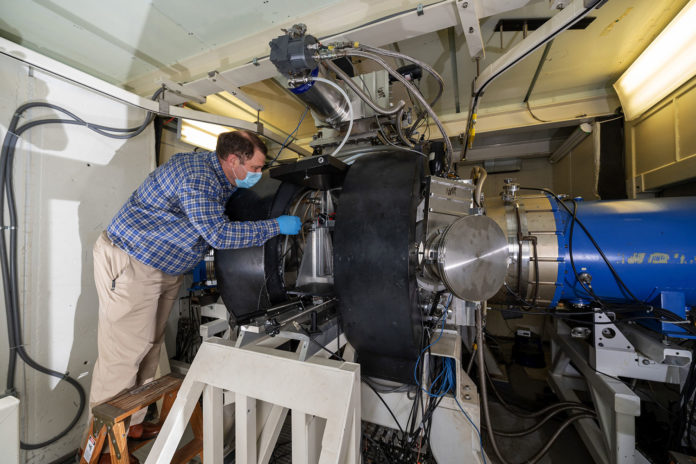The U.S. Naval Research Laboratory (NRL) research team is developing an Argon Fluoride (ArF) laser, which they say is a promising technology for achieving the high-gain inertial fusion implosions needed for energy production. The wide-bandwidth ultraviolet laser is currently the shortest wavelength laser that can credibly scale to the energy and power required for high gain inertial fusion.
According to the researchers, nuclear fusion would be a valuable addition to clean energy sources because it can provide baseload electrical power when the sun does not shine, and the wind does not blow. The baseload is the minimum level of demand on an electrical supply system over a span of time, for example, one week.
Laser fusion involves the implosion of small capsules to achieve the high densities and temperatures (100 million degrees Celsius) required to initiate the fusion reactions. If the fusion energy gain is much larger than that required to power the laser, one can use this as a power source. NRL simulations indicate ArF’s deep ultraviolet light could enable high gain at much lower laser energy than previously thought feasible.
“The ArF laser could enable development and construction of much smaller, lower-cost fusion power plants,” said Steve Obenschain, Ph.D., a research physicist at NRL. “This would hasten the deployment of this attractive power source with enough fuel feedstock readily available to last thousands of years.”
The NRL’s ArF laser is intended for a test facility based on the Inertial Confinement Fusion (ICF) principle. ArF’s deep ultraviolet light and capability to provide much wider bandwidth than other contemporary ICF laser drivers would drastically improve the laser target coupling efficiency and enable substantially higher pressures to drive an implosion. The NRL scientists say their laser kinetics simulations indicate that the electron beam-pumped ArF laser can have more than 16% intrinsic efficiencies versus about 12% for the next most efficient krypton fluoride excimer laser.
High-energy ArF lasers will require a significant investment to reach the performance required for fusion and the energy, repetition rate, precision, and billion-shot class reliability necessary for a commercial power plant, Obenschain noted.
“The advantages could facilitate the development of modest size, less expensive fusion power plant modules operating at laser energies less than 1 megajoule,” Obenschain said. “That would drastically change the existing view on laser fusion energy being too expensive and power plants being too large.”
The laboratory has developed a 3-phase plan to advance the argon-fluoride laser to the performance needed for high-energy-gain implosions. The first phase would complete the basic science and technology of the ArF now underway at NRL. This will be followed by phase two, which will concentrate on building and testing a full-scale high-energy ArF laser. In the third phase, an implosion facility would be constructed from 20 to 30 of these beamlines and utilized to demonstrate the high-energy gains needed for both defense and energy applications.
